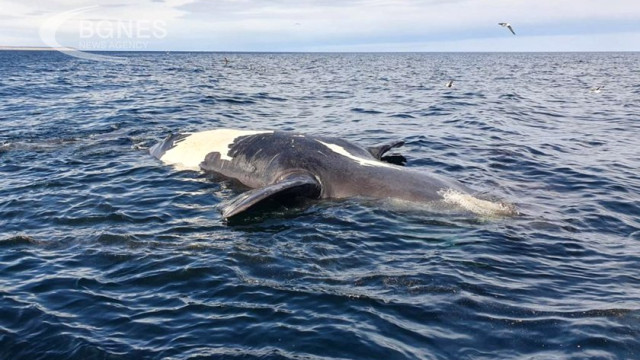Breakthroughs in Space Time. Virgin births. A promising candidate for extraterrestrial life. Science did not disappoint during our latest trip around the Sun, National Geographic reported.
In another remarkable year for science, astronomers made discoveries about space, biologists compiled a clearer map of our planet's inhabitants, and paleontologists painted a richer picture of the dinosaurs that roamed the Earth millions of years ago.
1. Astronomers have discovered massive ripples in the fabric of spacetime
For the first time, scientists have detected low-frequency gravitational waves moving through the galaxy. These cosmic ripples are likely the distant echo of supermassive black holes interacting and merging many billions of light-years away. The findings suggest that there were many more supergiant black holes in the early universe than previously thought, and continuing to study this new type of gravitational waves could help reveal details about the origins of our universe.
2. A brain decoder translates human thoughts - hope for people who have lost their speech
While not technically a "mind-reading" device, researchers at the University of Texas at Austin have reported groundbreaking work with their new AI-based system -- it translates a person's brain activity into a continuous stream of text in the lab. This decoder doesn't require a surgical implant but instead relies on functional MRI scans to pick up brain activity in response to things like podcasts or images. Instead of providing word-for-word transcriptions, the brain decoding system creates a dictionary of brain activity patterns based on how the person responds to certain words or images and then uses that dictionary to match the brain activity to other things the person thinks about.
3. The ancient whale may have been the largest animal in history
An ancient cetacean mammal called Perucetus colossus may have been the largest animal in history. A new analysis of fossil bones from the ancient whale, which more than 37 million years ago inhabited the waters off the coast of Peru, suggests the animal may have weighed more than 300 tons and measured about 18 meters. If it was as heavy as scientists think, it would be the largest known animal to have ever lived.
4. T. Rex had lips, which changes our understanding of this dinosaur
Tyrannosaurus rex and other carnivorous dinosaurs probably had a different than supposed lip that covered their fearsome teeth. A team of paleontologists came to this surprising conclusion after examining modern specimens of prehistoric animals, including birds and reptiles, along with known details of dinosaur anatomy. They argue that T. Rex and its related carnivores likely had soft tissue that covered their sharp teeth to protect the animals' mouths and keep their teeth in tip-top shape for an attack.
5. 3-million-year-old stone tools reveal the ingenuity of our non-human relatives
In southwestern Kenya, archaeologists have unearthed a surprising find: stone tools buried alongside fossils of the hominin Paranthropus, an ancient non-human relative of our species. The discovery of the tools - which may be up to 3 million years old - provides evidence that non-human hominins developed stone technology. Moreover, it shows that the development of tools occurred earlier than previously thought.
7. The number of discovered planets exceeds 5,500
In August, roughly three decades after astronomers discovered the first planets outside our solar system, scientists announced the discovery of 6 new exoplanets, bringing the total number of known planets to over 5,500. such as the Transiting Exoplanet Survey Satellite (TESS), continues to reveal a remarkable variety of new worlds in the galaxy.
8. Chimpanzees, like humans, go through menopause
Biologists have long wondered about the evolutionary benefit of animals living long past their reproductive age. Only killer whales, minke whales, narwhals, beluga whales, and humans are known to experience menopause. But new scientific work, which is based on a robust, long-term analysis of hormones in chimpanzee urine, confirms that chimpanzees in at least one area - Uganda's Kibale National Park - go through menopause and live on. The urine studies, which spanned females between the ages of 14 and 67, showed that chimpanzees experienced menopause around age 50, an intriguing parallel to humans, who often experience menopause at the same age.
9. The first known virgin birth among American crocodiles
In the latest example of an asexual reproduction technique called parthenogenesis, a lone female American crocodile in a park in Costa Rica has produced offspring without a male. The phenomenon, which typically occurs when animals face extreme population pressure, has been reported in other animals, including critically endangered California condors, multiple species of sharks, Komodo dragons, and some snakes, but has not yet been reported in any species of crocodile. The mother crocodile had no contact with other animals of her species for about 16 years, and genetic analysis confirmed that the fetus was indeed a partial clone of its mother. Although this animal lived in captivity, the discovery has implications for its wild relatives.
10. Phosphorus discovered on Saturn's moon Enceladus - an important sign of life
New chemical data suggests that one of Saturn's moons may harbor life. This year, scientists announced that they had discovered phosphorus in the ocean of Saturn's sixth-largest moon, Enceladus. Along with carbon, hydrogen, nitrogen, oxygen, and sulfur, this sixth element is essential for sustaining life. Astronomers had already detected traces of the other five elements on Enceladus, so the latest find — discovered in ice particles captured by the Cassini space dust analyzer — makes this icy rock a promising candidate for extraterrestrial life. /BGNES







